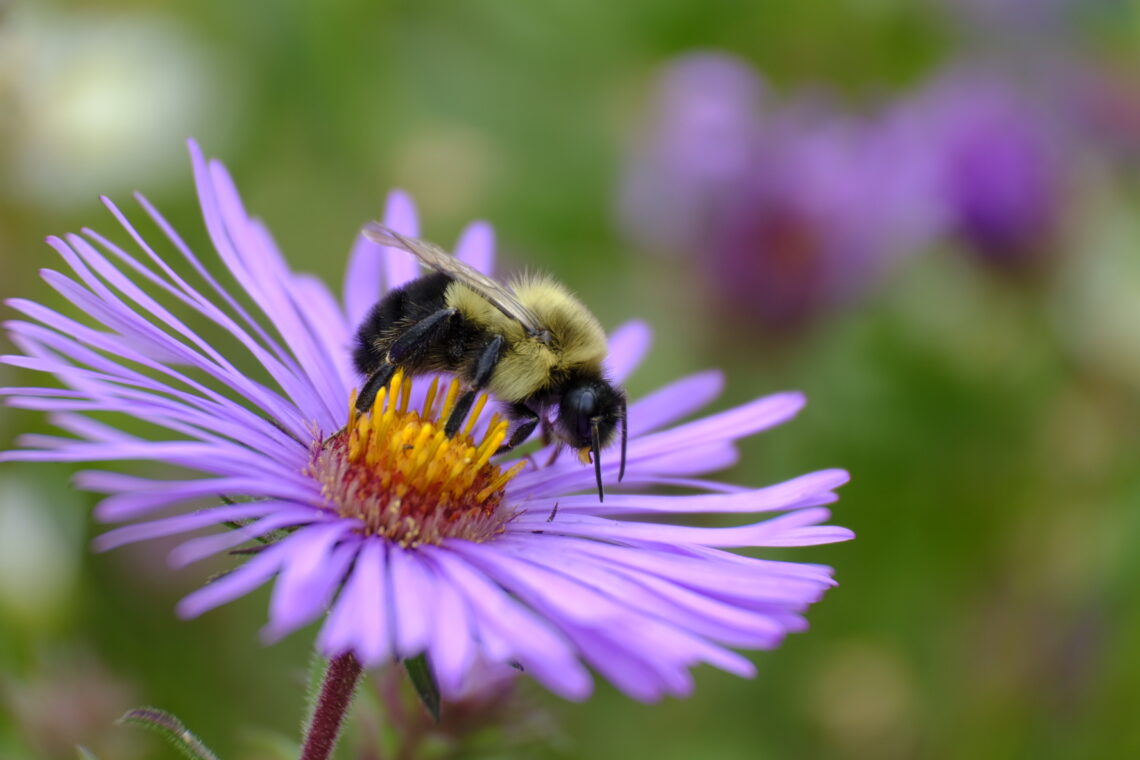It’s aster and goldenrod season! This time of year is one of my favorites as the natural landscape lights up with hues of yellow and purple. Head out to a local prairie near you and you’ll see firsthand just how complimentary these colors are. They make me think of apple picking, the beginning of crunchy leaves on the sidewalk, and of course the end of summer. In fact, this Saturday marks the autumnal equinox, so put on a flannel, grab that spiced warm drink you’ve been thinking about, and let’s get outside!
For those not quite ready for fall (I’m one of them, so no pumpkin spice latte for me), here’s a little reminder that some bird species are still nesting! Most think of spring as the time for baby birds, but some species like the American goldfinch don’t begin nesting until mid-late summer.
While it may seem like they are procrastinating just a tad, goldfinches have actually adapted quite well to late-season nesting. During this time, milkweed and thistle fluff are plentiful and can be found lining their nests. By the time goldfinch fledglings are ready to leave the nest, most plants have already gone to seed which just so happens to be the sole diet of goldfinches. Convenient! See the photo below of the active goldfinch nest that is in the maple in my front yard RIGHT NOW!
This time of year, insects are also still very active. Go take a look at those goldenrods and asters currently in bloom and you’ll likely find a sleepy bee absolutely covered in pollen. Last week while out with my monthly outdoor volunteers, we came across a very large yellow garden spider (pictured below) trying to catch insects in its web. The pattern on the abdomen of this particular spider made it look like it had several large eyeballs staring back at me. Creepy!
Lastly, I’ll leave you with this picture of a cedar beetle perched on a wild columbine seed pod. My son was the one who discovered this odd-looking insect the other day and said that it looked like antlers on its head. I had to agree with him! Having never seen one before, I immediately looked up what it was. Turns out, it’s a cedar beetle which is confusing because it has no relationship with cedars.
What they’re known for is the parasitic relationship they have with cicadas. In fact, they’re also called ‘parasitic cicada beetles’. Apparently, they lay their eggs on trees and once the larvae hatch, they crawl down the tree and burrow into the ground in search of cicada nymphs for a meal. If that’s not creepy, then I’m not sure what is!
Well, I hope you enjoyed my virtual tour and I’ll see you next time!
*Did you miss an article? Check out my collection of past monthly Nature Now articles on our website HERE. Just click the dropdown menu ‘Any Type of News’ and change to ‘Nature Now’ to filter the articles.




